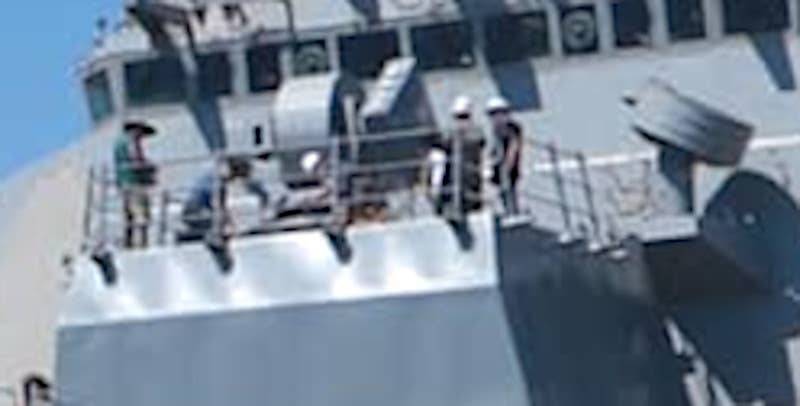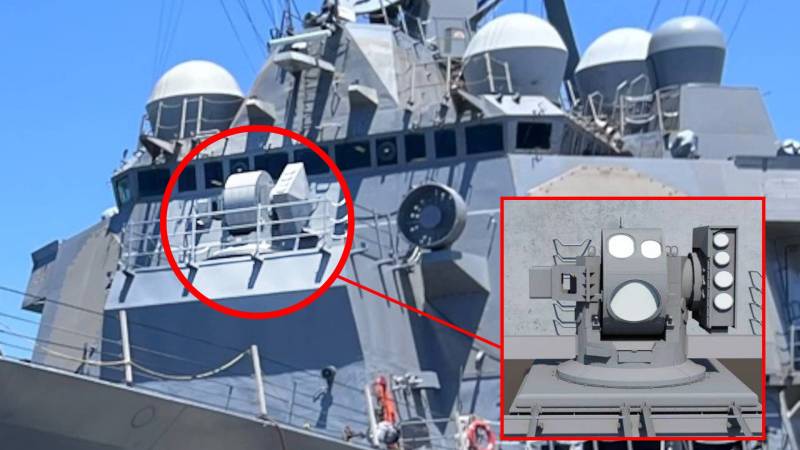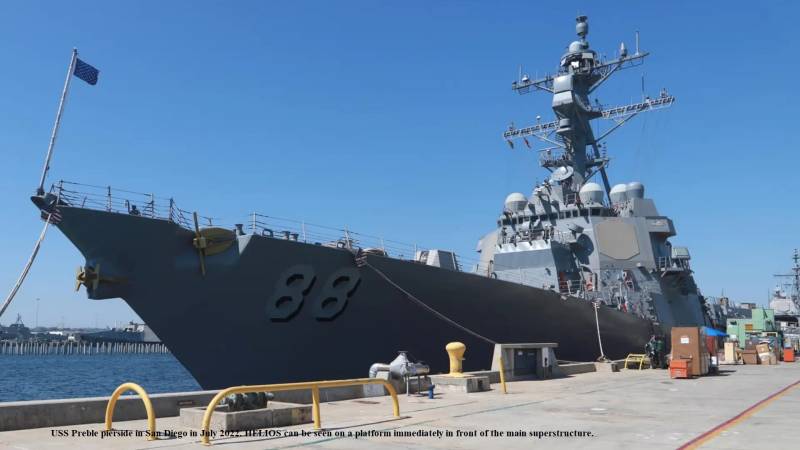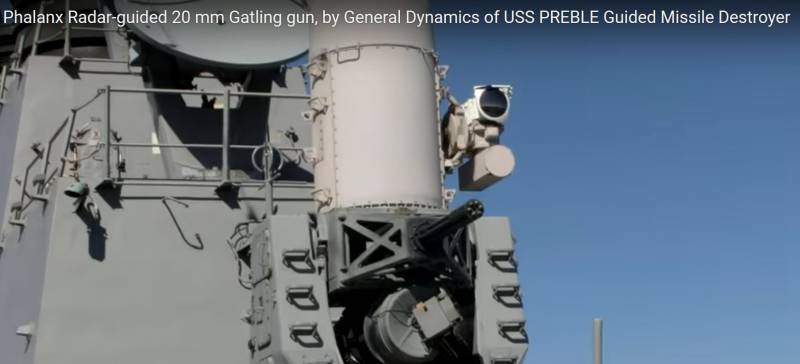USS Preble is the first US Navy destroyer equipped with a HELIOS laser
The WarZone magazine this time offers us not an excursion into the past, but news from the real thing. At least the article by Joseph Trevithick appeared on August 23, 2022. And that's what they write there.
The USS Arleigh Burke-class destroyer USS Preble received a High-Energy Laser with Integrated Optical Dazzler and Surveillance System (HELIOS) in service. This is the first of the ships equipped with HELIOS, which is a "laser weapon directed energy" with a capacity of 60 kilowatts, as well as the first to have such a weapon integrated with the Aegis combat system. The destroyer joins a small but growing number of Navy ships equipped with various types of directed energy weapons.
Lockheed Martin, the prime contractor for HELIOS, issued a press release last week announcing the installation of the system aboard the Preble, but photos on the ship's official Facebook page show the laser had been installed weeks earlier. In March, the company said it had completed ground testing of the system at Wallops Island, Virginia, and the entire structure is now being shipped to USS Preble's home port in San Diego for installation directly on the destroyer.
Rick Cordaro, vice president of Lockheed Martin Advanced Product Solutions, said in a statement issued in an Aug. 18 press release.
Lockheed Martin received its first contract from the Navy to work on HELIOS in 2018, but in reality the system has a much longer lifespan. history research and development in the field of directed energy weapons.
The laser is mounted in front of the ship's main superstructure on a modified platform, which was originally designed to accommodate a 20mm Vulcan Mk 15 Phalanx (CIWS) close-range defense gun.

Arleigh Burke Flight IIA second-series destroyers, such as Preble, have never had such a gun installed in this location, although it is located in the aft part of the superstructure.
HELIOS, as its name suggests, is a multipurpose system. It is powerful enough to damage or destroy some targets such as small Drones and boats. As such, it offers a limited replacement for CIWS guns and provides protection against targets that, when deployed in groups, could pose a threat to ships like the Preble.
The system can also act as a "dazzler" by blinding or confusing optical sensors on enemy ships and aircraft, as well as the optical seekers of incoming missiles and other munitions. When used in this mode, HELIOS has the potential to deflect incoming weapons or limit the enemy's overall situational awareness and surveillance capabilities.
In addition, HELIOS has its own optical sensors, the main task of which is to detect and track a target and point a laser at it, but they can also be used simply as second-order surveillance systems (it’s not entirely clear what that is).
On destroyers such as Arleigh Burke and others equipped with the Aegis system, the HELIOS laser promises to be even more effective.
Rich Calabrese, director of Surface Navy Mission Systems at Lockheed Martin, during a broader interview with Tyler Rogoway for The WarZone magazine last year, had this to say about HELIOS and Aegis:
Lockheed Martin has already secured a contract to supply at least one more HELIOS system to the Navy for installation on another Arleigh Burke-class destroyer. HELIOS is designed with future growth in mind, and there has already been talk of increasing the maximum laser power to 150 kilowatts.
The Navy has made it clear that HELIOS is only part of its directed energy weapons ambition, which will eventually include high power microwave systems. In the past, this particular system has been described as the first part for the larger Surface Navy Laser Weapon System (SNLWS) program.
As part of the Navy's efforts to create a directed energy weapon, a number of other Arleigh Burke-class destroyers, including USS Dewey and USS Stockdale, are now equipped with the less powerful Optical Dazzling Interdictor, Navy (ODIN) laser dazzle. Unlike HELIOS, the ODIN laser can only be used to blind detection and guidance systems.
The amphibious transport dock ship USS Portland is equipped with another weapon such as the Laser Weapon System Demonstrator Mk 2 Mod 0 with a power of 150 kW. It has similar capabilities to HELIOS, although, of course, more powerful.
The 150-kilowatt laser opens up opportunities for hitting larger and more complex targets, including low-flying cruise missiles and aircraft, as well as artillery missiles (I don’t know about us, but the Americans call missiles launched by MLRS systems that way). Earlier this year, the Navy, in collaboration with Lockheed Martin, demonstrated the ability of a solid-state laser energy weapon to successfully shoot down an unmanned target acting as a counterpart to a subsonic cruise missile.
This test, which was conducted at the White Sands Missile Range, New Mexico, used a laser weapon called the Laser Layered Defense (LLD) system.
Sea trials of HELIOS on the destroyer Prebl will start in fiscal year 2023, which begins on October 1, 2022. It is still unclear when the destroyer with the new system will be officially recognized as combat-ready.




Information